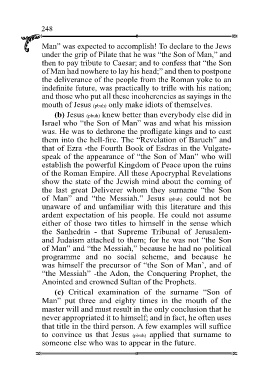Page 249 - Demo
P. 249
245lost in their time.After the close of the Canon of the Hebrew Scriptures in the fourth century or so B.C. by the “Members of the Great Synagogue,” established by Ezra and Nehemiah, all other sacred or religious literature besides those included within the Canon was called Apocrypha and excluded from the Hebrew Bible by an assembly of the learned and pious Jews, the last of whom was the famous “Simeon the Just,” who died in 310 B.C. Now among these Apocryphal books are included the Apocalypses of Enoch, Barukh, Moses (pbuh) , Ezra, and the Sibyline books, written at different epochs between the time of the Maccabees and after the destruction of Jerusalem by Titus. Itseemsto be quite à la mode with the Jewish Sages to compose Apocalyptical and religious literature under the name of some celebrated personage of antiquity. The Apocalypse at the end of the New Testament, which bears the name of John the Divine, is no exception to this old Judeo Christian habitude. If “Judah the brother of the Lord” could believe that “Henoh the Seventh from Adam (pbuh) ” was really the author of the one hundred and ten chapters bearing that name, there is no wonder that Justin the Martyr, Papias, and Eusebius would believe in the authorship of Matthew and John.However, my aim is not to criticize the authorship of, or to extend the comments upon these enigmatic and mysterious revelations which were compiled under the most painful and grievous circumstances in the history of the Jewish nation; but to give an account of the origin of this surname “the Son of Man” and to shed somelight upon its true signification. The Book of Enoch too, like the Apocalypse of the Churches and like the Gospels, speaks of the coming of “the Son of Man” to deliver the people of God from their enemies and confuses this vision with the Last Judgment.


